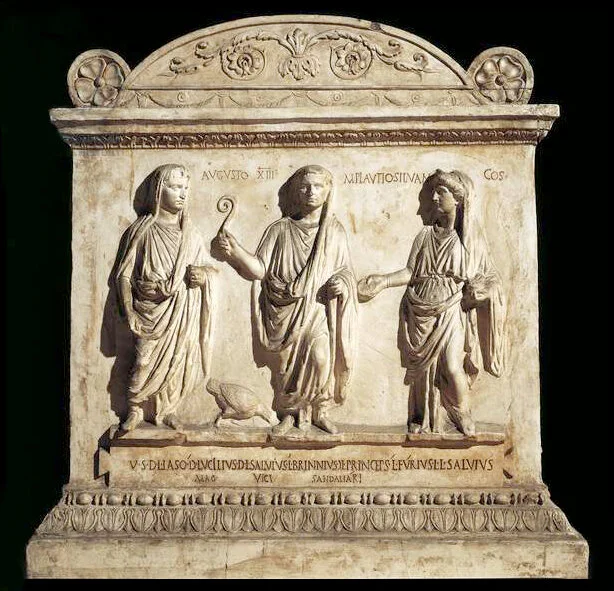Romans - they didn’t just wing it
Augury is an ancient form of divination used in Greece, Rome, Egypt, by the Celts and indigenous American tribes. It’s the practice of reading omens, offering a portent of things to come based on the observation of bird behavior. The Romans called it augury and the Greeks ornithomancy.
The term derives from the official Roman augur or auspex, the expert practitioner, the influential priest who first had to learn bird behavior before casting interpretation from his observation.Their role was central to much of Roman society. Augurs weren’t making decisions but establishing whether the outcome of particular actions would be favorable or perhaps not. Interpreting these signs was known as ‘taking the auspices’.
For magistrates, government officials, using this divination tool was part of doing business. Political decisions, elections, passing of laws, initiation of wars, military expeditions were all considerations after reflecting on a reading.Detailed rules and regulations presided over both the augur delivering the observation and a magistrate who in turn had his actions reviewed by the college of augurs. This meant room for errors and do-overs and they were convenient methods to make the unpopular laws invalid. Ah, so perhaps no need to meet with urgent business out of town on a fast horse when there was room for pointing the finger and assuage some blame.
I think we should tip our hats to the many birds who played their part in the building of the Roman Empire, maybe they knew a thing or two about organisation, engineering and culture.
Multiple behavioral aspects of certain birds, those surely attributed with some intelligent behavior, were considered at various times of the day. Who and how many were flying in from the four corners of the sky, at what time, how did they sound, who was escaping a predator, hunting prey, guarding a nest, not eating enough, eating too much?‘Taking the auspices’ included checking out chickens and their feeding habits, their level of enthusiasm in dashing out of the enclosure for food.Chickens were cared for by the Pullaris.
Photo Andrey Tikhonovsky
But in any reading if there was an unexpected sign of threatening thunderstorm and lightning, forget it!
It’s understandable as to why birds were largely the chosen ones, being creatures with an illusive, mysterious lifestyle of elevation and transcendence that could bridge the gap between mortal man and the heavenly realms. And easy access to read when they are very vocal in announcing their presence. They were considered to be harbingers of God’s messages. Birds were signs of God’s will.
In the mythical story of the building of Rome, twin brothers Romulus and Remus had differing plans, on which hill should the city be built. They decided to use augury and wait for God’s approval. Remus saw six vultures, Romulus saw twelve.Each took their sign to be the decision maker but this resulted in anger and bloodshed.Romulus killed his brother.
Today we see an investment in prophecy live on at the Tower of London in England. Six elite guardian ravens, plus one as a spare, reside as guests, free to roam the manicured lawns and four different areas within the walls of the Tower.They are catered to in every respect by Ravenmaster, Chris Skaife. It’s obvious that the magic in these symbolic birds provides a profound emotional connection.
Historically, Charles II insisted on their presence and protection having heeded the warning of possible collapse of the Crown and kingdom falling to another power should they be lost or fly away. To ensure the influence, the indispensable, supernatural ability of the birds, the Ravenmaster clips one wing to prevent them from leaving. It’s certainly a large responsibility on any pair of feathered shoulders.
Whether or not we take stock in observing bird behavior as a message of prophecy or spiritual reflection, we know for sure that they are our fortune-tellers, our sentinels, providing valuable information for life on planet earth, revealing any ecological problems,challenges and changes.
Learn more about Chris Skaife and the ravens at the tower


